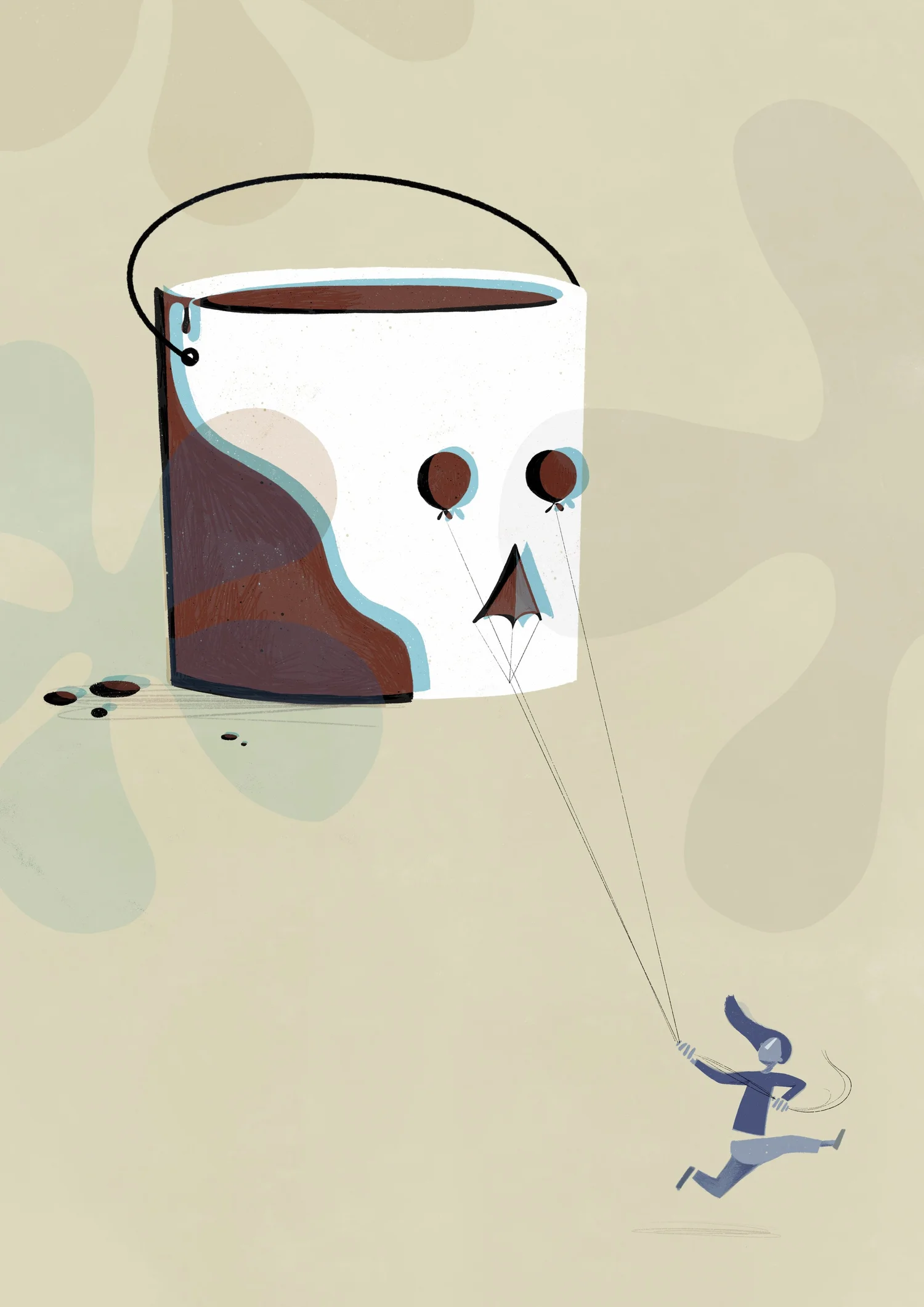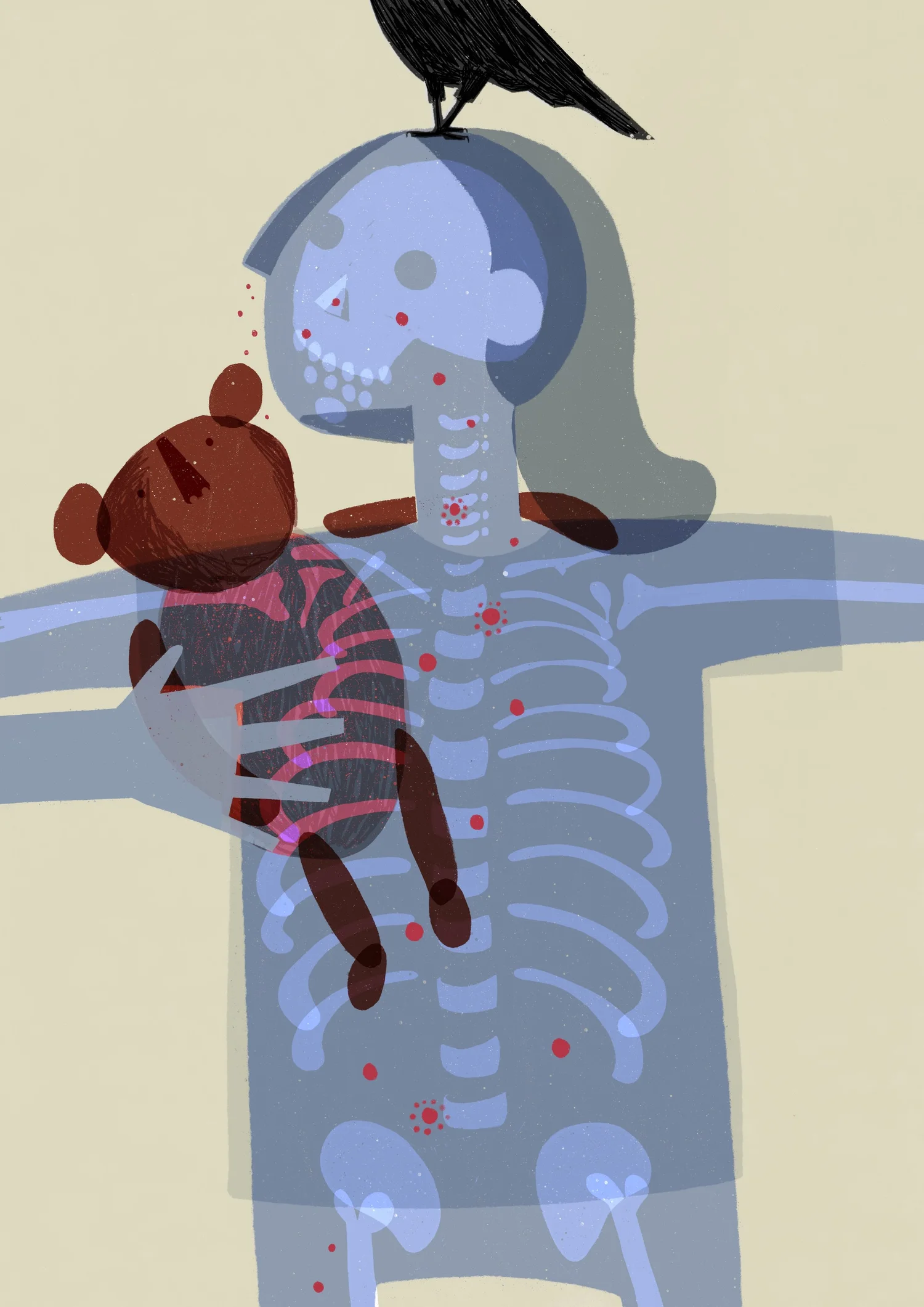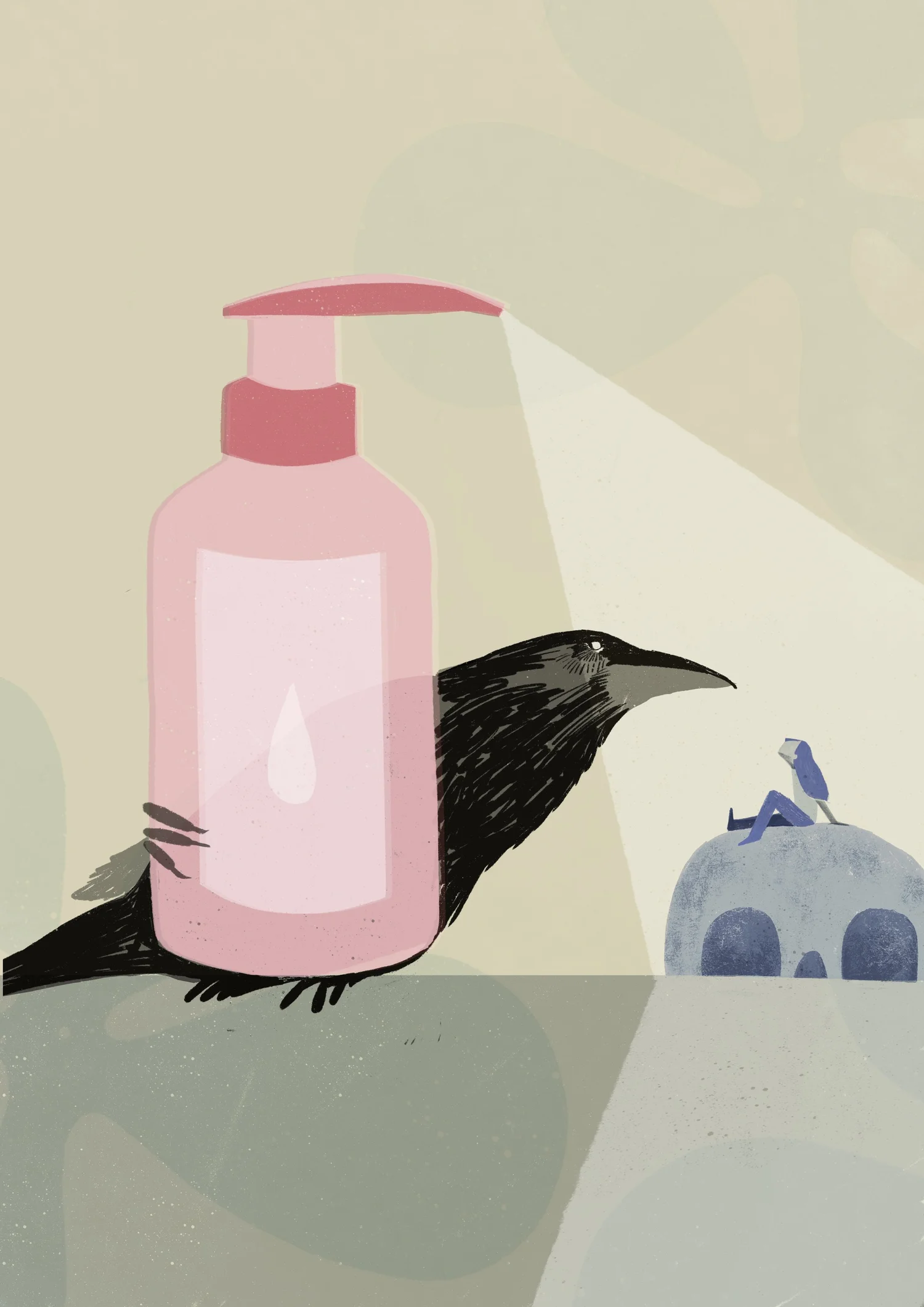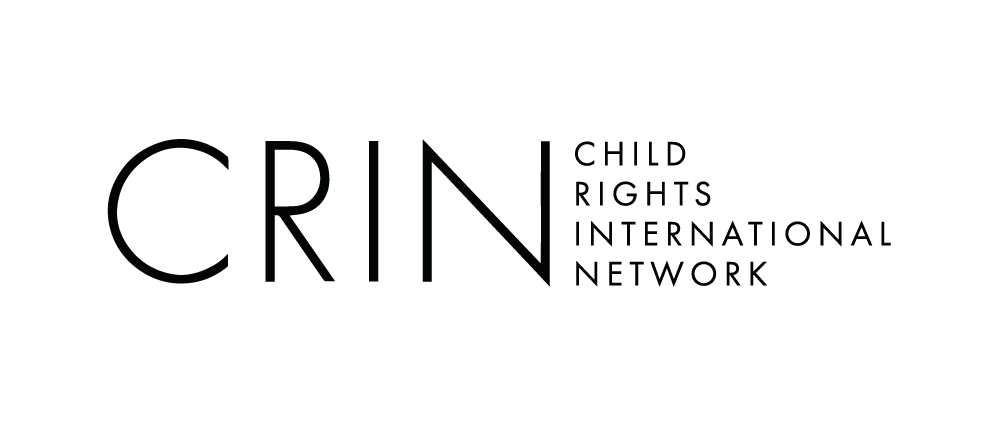
The child tells me we are the same.
Children are entitled to all human rights. Not because they are the "adults of tomorrow" or "the future", but because they are human beings today. The EU and its Member States have committed to respect, enforce and protect these rights under United Nations and European legally binding texts. Those include the UN Convention on the Rights of the Child and the Charter of Fundamental Rights of the European Union. According to those agreements, the child's best interests must be a primary consideration in all actions relating to children.
However, in their daily lives children are still being exposed to a wide range of dangerous chemicals, such as bisphenols, forever pollutants (PFAS) and other endocrine disrupting substances. These can have particularly damaging effects on children’s health. Children are worst affected by harmful substances, even at very low doses. Their exposure has short, medium and long-term and irreversible adverse effects on their health including (but not limited to) the increased risk of developing childhood cancers, IQ loss, asthma, diabetes, reproductive system disorders and obesity.
Research, including from United Nations’ experts, demonstrated that such exposure and related adverse impacts can lead to severe infringements upon children's rights to health, bodily integrity, gender equality, non discrimination, as well as the right to a clean, healthy and sustainable environment. The EU Strategy on the Rights of the Child also states that all children have a right to a good standard of living. To deliver on the Strategy, protecting children from exposure to hazardous chemicals should be a cornerstone of each and every decision maker working on EU chemicals regulations.

The child tells me we are the same.
Harmful exposure is a silent assault on children's rights, with rights to health, survival, play, food, water and bodily integrity being violated, among others. Permissive legislation on chemicals can have serious impacts on children’s development, enjoyment of fundamental rights and the overall well-being of the planet.
The ongoing chemical contamination of people and the environment also reinforces environmental and social injustices. Children from marginalised communities who live in the most polluted areas called “sacrifice zones” are particularly vulnerable to exposure to hazardous chemicals.
The good news is that the European Union and its institutions have the power to put an end to these violations and better protect children’s health in Europe and beyond. The Chemicals Strategy for Sustainability adopted in 2020 lays a solid groundwork for the European Commission, European Parliament and Council of the EU to work together to improve the chemicals laws and policies.
Following the tortuous path of the Crow and the Child, this exhibition will drive you through the existing loopholes of the current legislation letting the door open to children’s rights infringements, and how to close it. To consolidate the understanding of the ways hazardous chemicals affect children, the venue exhibits the work of artist and CRIN art director Miriam Sugranyes. This art exhibition aims at triggering discussions on better regulating chemicals in the EU, and concrete actions to tackle European and global contamination of children, putting an end to severe violations of fundamental rights.

The child tells me we are the same.
The revision of the Regulation on the registration, evaluation, authorisation and restriction of chemicals (REACH) is an unprecedented opportunity for EU decision makers to champion children’s rights. In view of children’s legal right under the UN Convention on the Rights of the Child to have their best interests made a primary consideration in all matters that concern them, decision-making impacting children should always be guided by precaution against, and prevention of harm. Accordingly, the EU chemicals legislation should always adopt a maximalist approach to safety. The best and highest level of health protection should always be the guiding principle when assessing and managing chemicals.
These principles can make substantive changes to children’s lives. The revision of REACH should be guided by a principled approach, in line with the EU Treaty on the Functioning of the European Union (TFEU), establishing the precautionary principle and the principle of prevention as core elements of EU environment policy. The protection of children and their rights against harmful exposure depends on key reforms in the way hazardous chemicals are assessed and managed.

The child tells me we are the same.
Per- and polyfluoroalkyl substances (PFAS) include thousands of synthetic chemicals containing very strong, carbon-fluorine bonds, which resist degradation. Widely known as ‘forever pollutants’, PFAS are easily transported in the environment, often over long distances, and are associated with harm to human and ecological health. They can be found everywhere in Europe, and the interactive map at your disposal enables you to locate the contamination sites across Member States.
This scandalous ongoing pollution shows that current EU chemical regulations are insufficient to prevent the continuing pollution of children and their environment by PFAS. Those chemicals are still widely used in industrial processes and found in consumer products. They can have endocrine-disrupting properties with significant impacts on foetal growth and foetal development with consequences for birth outcomes including preterm birth, children’s development, and health into adulthood. On the evidence, exposure to PFAS leads to significant harms to children’s health, family finances, and national economies – costs that only grow as PFAS contamination continues. Harm following exposure can be irreversible and be passed from one generation to the next. Among the vast body of scientific evidence on PFAS health impacts, a large study conducted on Finnish pregnant people and published in 2023 revealed that prenatal exposure to some PFAS is associated with a higher risk of childhood leukaemia.
In 2023, five EU member states collectively proposed to ban PFAS from a wide range of industrial and consumer uses. The EU now has the opportunity to tackle one of the biggest health and environmental crises ever faced. To fully protect children’s health and their surrounding environment, the EU must take up this restriction proposal as a bloc, applying across all industry sectors and all non-essential uses in order to fully align with its promises in the Child Rights Strategy and the Chemicals Strategy for Sustainability.

The child tells me we are the same.
Children are entitled to all human rights. Not because they are the "adults of tomorrow" or "the future", but because they are human beings today. The EU and its Member States have committed to respect, enforce and protect these rights under United Nations and European legally binding texts. Those include the UN Convention on the Rights of the Child and the Charter of Fundamental Rights of the European Union. According to those agreements, the child's best interests must be a primary consideration in all actions relating to children.
However, in their daily lives children are still being exposed to a wide range of dangerous chemicals, such as bisphenols, forever pollutants (PFAS) and other endocrine disrupting substances. These can have particularly damaging effects on children’s health. Children are worst affected by harmful substances, even at very low doses. Their exposure has short, medium and long-term and irreversible adverse effects on their health including (but not limited to) the increased risk of developing childhood cancers, IQ loss, asthma, diabetes, reproductive system disorders and obesity.
Research, including from United Nations’ experts, demonstrated that such exposure and related adverse impacts can lead to severe infringements upon children's rights to health, bodily integrity, gender equality, non discrimination, as well as the right to a clean, healthy and sustainable environment. The EU Strategy on the Rights of the Child also states that all children have a right to a good standard of living. To deliver on the Strategy, protecting children from exposure to hazardous chemicals should be a cornerstone of each and every decision maker working on EU chemicals regulations.

The child tells me we are the same.
In recent years, the Cosmetic Products Regulation has undergone several assessments, including the Fitness Checks of chemicals legislation and on endocrine disruptors, which identified several shortcomings in the regulation. In the Chemicals Strategy for Sustainability and through the recent review process, the Commission also repeatedly acknowledged the need to modernise the text, stressing that its revision aims at supporting the green transition of the chemical industry, by minimising and substituting as far as possible chemicals having a chronic effect for the environment and phasing out the most harmful ones for non-essential societal uses. The Regulation’s shortcomings persist, and so is the need to revise it to put an end to children's rights violations linked to their exposure to hazardous chemicals.
Worryingly, hazardous substances can still be found in cosmetic and personal care products regulated under the CPR. And if some are prohibited for uses intended to children under certain age limits, they can still be used in many products sold in the EU, and can affect children above prescribed age limits, as well as fetuses exposed prenatally via parents exposure. Children are affected by their direct exposure but also prenatally impacted by chemicals found in cosmetic and personal care products as exposure can occur during the foetal development, a critical period of life with increased vulnerability to exposure to hazardous chemicals. An update of the Cosmetic Products regulation can enable to modernise the text to better reflect the state of science, including by better comprehending and upholding the impacts on children's health and their rights, strengthening the assessment and management of chemicals, as well as improving enforcement. Protecting children’s health and their rights requires a restriction on carcinogenic, mutagenic, and toxic to reproduction (CMRs) substances, endocrine disruptors and other substances damaging the environment. As such, to deliver on its human rights commitments, the EU must achieve an ambitious review as swiftly and efficiently as possible, and not a deregulation.

The child tells me we are the same.
Exposure to hazardous pesticides is linked to a wide range of children’s rights violations, particularly the right to health. It impacts their health directly as environmental exposure increases risks of diseases, but also in the long term by participating in water contamination, climate change and degradation of food quality. The 2009 Directive on sustainable use of pesticides contributes to reducing the risks and impacts of pesticide use, but this legislation and its enforcement can be improved so as to prevent the daily and continued exposure of children to hazardous pesticides across the European Union.
In their report on pesticides published in 2017, the United Nations Special Rapporteur on the right to food and Special Rapporteur on toxics and human rights emphasised that children are most vulnerable to pesticide contamination, due to the higher dose per unit of body weight. They warned that “exposure to even low levels of pesticides, for example through wind drift or residues on food, may be very damaging to children’s health”. The report also relevantly outlined that “pregnant women who are exposed to pesticides are at higher risk of miscarriage, preterm delivery and birth defect”.
Moreover, pesticides degrade the biodiversity, as well as the ecosystem on which children and their families depend for food and work. Pesticides are readily distributed in watercourses and the soil, where they accumulate in animals and plants, including the human food chain. Ecological degradation jeopardises the food security and long-term economic prospects of millions of children around the world, including across the EU. Use of harmful pesticides contributes to biodiversity losses and depletion of the species richness. Biological quality of greenspace is essential for conservation purposes, and benefits to human mental health and psychological wellbeing.
Pesticides also contribute to and worsen climate change, both during their manufacture and after their application. The production of synthetic pesticides generates important greenhouse gas emissions, as the vast majority derives from fossil fuels. Several pesticides also emit greenhouse gas emissions after their application.
The continued use of hazardous pesticides deteriorates the ecosystems and wellbeing of present and future generations.

The child tells me we are the same.
While a revision of the EU pesticides rules is needed more than ever to tackle the exposure to hazardous pesticides and put an end to severe children’s rights violations, the European Parliament rejected in November 2023 the draft regulation on the Sustainable Use of Pesticides. Efforts to tackle hazardous pesticides must continue in 2026 and beyond, so the European Union can finally implement a clear and binding framework restricting the use of hazardous pesticides, particularly in areas where children live, grow and play. The conclusions of the Strategic Dialogue on Agriculture offer a great path forward with concrete actions, stressing the need to reduce pesticides, and adopting urgent and ambitious action to transition to sustainable food systems.
Pesticides reduction can become a reality, starting with implementing existing legislations. Among other actions, there is an urgent need for the effective implementation and enforcement of the Directive on Sustainable Use of pesticides, including to deliver on ambitious result-based National Action Plans, as well as effectively implementing Integrated Pest Management.
The transition to pesticide-free alternatives also requires that farmers and farm workers are supported when shifting away from harmful pesticides. They need better and more secure livelihoods, and the European Union can help them with a focus on the real issues farmers face and the solutions they need: fair incomes and better working conditions, as well as measures to face the climate crisis and biodiversity loss, as well as funding and support to phase out non-low-risk pesticides and switch to agroecological practices.

The child tells me we are the same.
Under the Chemicals Strategy for Sustainability, the EU promised to “lead by example, and, in line with international commitments, ensure that hazardous chemicals banned in the EU are not produced for export, including by amending relevant legislation if and as needed." In a children’s rights context, non-discrimination is not only a right, but a cardinal principle informing the realisation of all other rights. With the adoption of its EU Strategy on the Rights of the Child in 2021, the European Union recognised this, stating that every child in Europe and across the world should enjoy the same rights and live free from discrimination and intimidation of any kind.
Against that background, the Commission committed to propose concrete actions to protect, promote and fulfil children’s rights universally. By the same principle, export from the EU of prohibited products and chemicals should stop. Children must be protected against harmful exposure irrespective of where they live. Double standard in tackling harmful chemicals is unacceptable.
In addition to harming children in non-EU countries, harmful substances banned in the EU, exported and used outside of the EU, can return embedded in imported products, thereby also contaminating children in Europe. For instance, several very hazardous pesticides that are banned in the European Union can still be sold outside of the Union and used in fields, thus polluting soils, water, eventually contaminating food that is then imported back into the In 2020, 74 banned active substances were found in about 5,800 samples of food imported to the EU. A ban of production and export of those hazardous chemicals can enable the European Union to comply with its international and European obligations under human rights frameworks, as well as live up to the ambitions laid down in the Chemicals Strategy. It would encourage stronger global standards in the long term, while immediately enhancing protection for human health and the environment worldwide. Chemical pollution knows no boundaries. Substances that are hazardous in the European Union are just as harmful in other countries. Children must be internationally protected against harmful exposure to hazardous chemicals. The European Union cannot continue exporting hazardous substances that have adverse effects on children’s health and the environment.

The child tells me we are the same.
The triple ecological crisis - climate change, biodiversity loss, and chemical pollution - must be addressed as one. It is misguided to be “prioritising climate policies over chemical ones”, as they belong together. The green transition, as well as progressive climate and biodiversity policies, all hinge in part on stronger chemicals legislation.
Decarbonisation, detoxification, sustainable patterns of consumption and production - and the rights and welfare of children - all belong to the same challenge. Chemical pollution does not respect borders, or generations. Production and sales of harmful products and substances lead to human contamination and the pollution of the environment and contamination of citizens across generations. It creates a toxic legacy already impacting current generations and threatening the wellbeing and resilience of future generations. Every toxic chemical produced and released today writes a chapter in the future our children will inherit. Intergenerational fairness means ensuring that prosperity today does not poison the livelihood of tomorrow. As such, the next generation should inherit resilience, not irreversible environmental health degradation. The modernisation of key legislation, including on cosmetics, pesticides, as well as the REACH Regulation can help the EU to ensure that invisible chemicals stop leaving visible scars on children, their health and the ecosystems.
“Given humanity’s trajectory on toxics, climate change, and biodiversity loss, the planet is at risk of becoming a human sacrifice zone. But the transformative potential of the right to a toxic free environment can help us keep our planet habitable” - UN Special Rapporteur on toxics and human rights, Marcos Orellana, and UN Special Rapporteur on human rights and the environment, David Boyd (March 2022).

The child tells me we are the same.
Children are entitled to all human rights. Not because they are the "adults of tomorrow" or "the future", but because they are human beings today. The EU and its Member States have committed to respect, enforce and protect these rights under United Nations and European legally binding texts. Those include the UN Convention on the Rights of the Child and the Charter of Fundamental Rights of the European Union. According to those agreements, the child's best interests must be a primary consideration in all actions relating to children.
However, in their daily lives children are still being exposed to a wide range of dangerous chemicals, such as bisphenols, forever pollutants (PFAS) and other endocrine disrupting substances. These can have particularly damaging effects on children’s health. Children are worst affected by harmful substances, even at very low doses. Their exposure has short, medium and long-term and irreversible adverse effects on their health including (but not limited to) the increased risk of developing childhood cancers, IQ loss, asthma, diabetes, reproductive system disorders and obesity.
Research, including from United Nations’ experts, demonstrated that such exposure and related adverse impacts can lead to severe infringements upon children's rights to health, bodily integrity, gender equality, non discrimination, as well as the right to a clean, healthy and sustainable environment. The EU Strategy on the Rights of the Child also states that all children have a right to a good standard of living. To deliver on the Strategy, protecting children from exposure to hazardous chemicals should be a cornerstone of each and every decision maker working on EU chemicals regulations.

The end.
Lorem Ipsum
Lorem ipsum dolor sit amet consectetur adipiscing elit. Quisque faucibus ex sapien vitae pellentesque sem placerat. In id cursus mi pretium tellus duis convallis. Tempus leo eu aenean sed diam urna tempor. Pulvinar vivamus fringilla lacus nec metus bibendum egestas. Iaculis massa nisl malesuada lacinia integer nunc posuere. Ut hendrerit semper vel class aptent taciti sociosqu. Ad litora torquent per conubia nostra inceptos himenaeos.
Lorem ipsum dolor sit amet consectetur adipiscing elit. Quisque faucibus ex sapien vitae pellentesque sem placerat. In id cursus mi pretium tellus duis convallis. Tempus leo eu aenean sed diam urna tempor. Pulvinar vivamus fringilla lacus nec metus bibendum egestas. Iaculis massa nisl malesuada lacinia integer nunc posuere. Ut hendrerit semper vel class aptent taciti sociosqu. Ad litora torquent per conubia nostra inceptos himenaeos.
